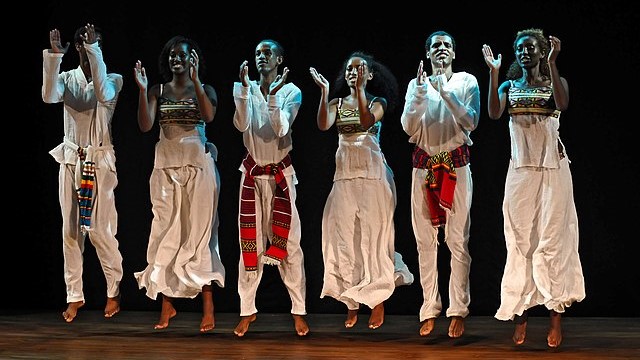In Ethiopia, dance is not simply performance but a living record of history, shaped by centuries of ritual, celebration, and cultural memory. Across the country’s highlands, valleys, and plains, movements unfold that embody the distinct identities of Ethiopia’s many communities. Each gesture, each rhythm, carries a narrative that connects the present to generations past.
Among the most widely recognized forms is the Eskista, a dance of the Amhara and Oromo people that relies on rapid, rolling movements of the shoulders. The style, sometimes described as one of the world’s most physically demanding traditional dances, is performed at weddings, harvest festivals, and communal gatherings. The sharp, percussive motions often mirror the complex rhythms of traditional music, where instruments such as the krar, a six-stringed lyre, or the masenqo, a single-stringed fiddle, set the cadence. The effect is both hypnotic and invigorating—music and motion merging into a language of their own.
In western Ethiopia, the Gumuz people maintain a repertoire of dances that reveal a different cultural landscape. Their fast-paced, energetic routines are frequently staged during festivals, where dancers compete in displays of strength and stamina. These gatherings serve not only as entertainment but also as affirmations of identity, reinforcing social bonds and preserving communal stories that might otherwise fade.
Ethiopian dance, whether in the highlands or the lowlands, functions as more than ritual. It is a form of storytelling. Some choreographies evoke episodes of war or hunting, while others reference religious parables or ancestral myths. What emerges is a collective memory set to rhythm, one that communicates resilience, continuity, and faith.
The role of dance extends beyond performance spaces. In village courtyards, markets, and church festivals, dancing often acts as a unifying force, dissolving social barriers and strengthening community ties. Participation is not limited to trained dancers; in many settings, the boundary between audience and performer blurs, underscoring the idea that tradition belongs to all.
Ethiopia’s cultural landscape is marked by extraordinary diversity—more than 80 ethnic groups inhabit its territory, each with its own variations of music, costume, and movement. Yet dance remains a common thread, a vessel through which history is preserved and shared. In an era of rapid change, these traditions endure, continuing to shape identity and collective memory across the generations.
Sources:
- UNESCO Intangible Cultural Heritage. Traditional Music and Dance in Ethiopia.
- Central Statistical Agency of Ethiopia. Cultural Practices and Diversity.
- Levine, Donald N. Wax and Gold: Tradition and Innovation in Ethiopian Culture. University of Chicago Press, 1965.
- Shelemay, Kay Kaufman. Music, Ritual, and Falasha History. Michigan State University Press, 1986.


